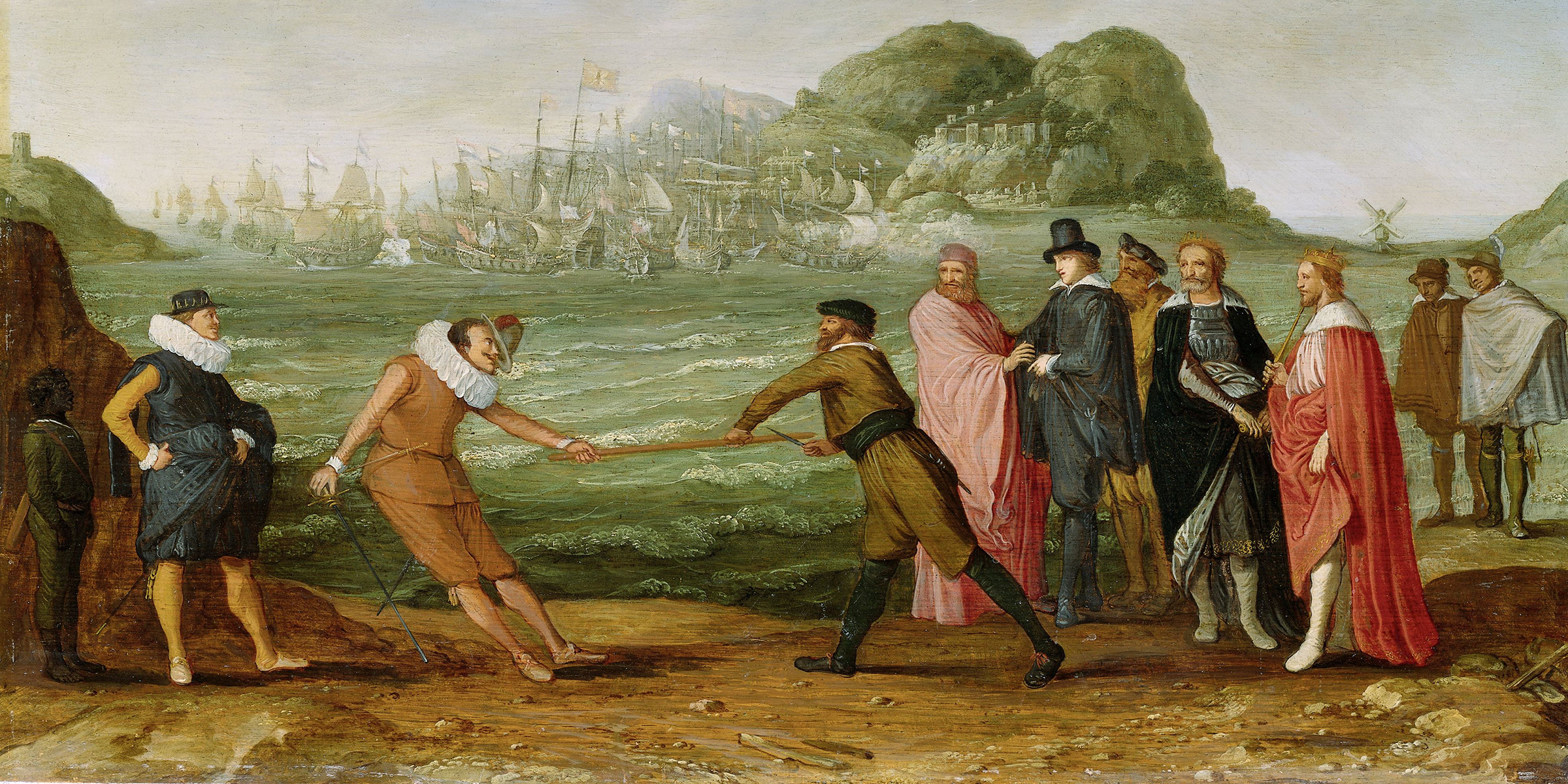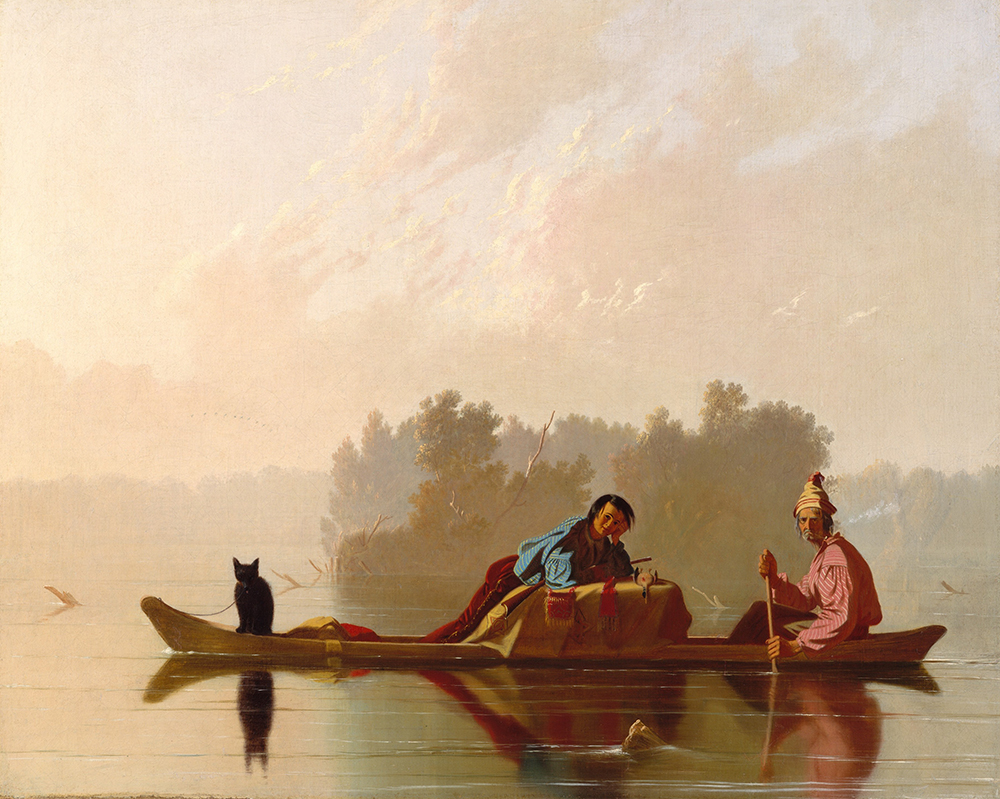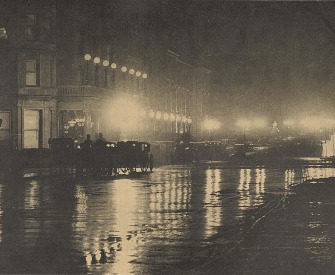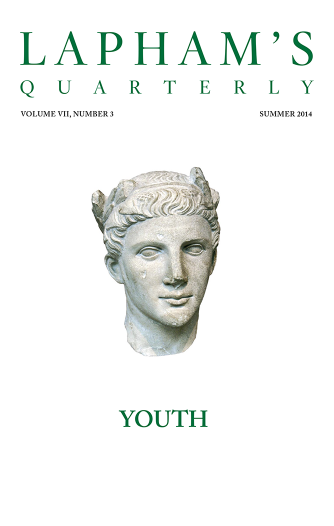There is no blindness more insidious, more fatal, than this race for profit.
—Helen Keller, 1928
A View of the Hippodrome and Blue Mosque in Istanbul (detail), c. 1805. © Los Angeles County Museum of Art, The Edwin Binney, 3rd, Collection of Turkish Art.
At some point after living in Istanbul for many years, I came to find it strange that every time there was a financial crisis in the country, foreign newspapers dispatched a reporter to the Grand Bazaar to interview shopkeepers and idling shoppers about the state of their wallets. The problem for me was not that it was a cliché but that the practice seemed willfully in denial of the manifestly more significant and violent commercial transformations in Istanbul happening all around them: the dispossession of the poor and marginal from historic neighborhoods; the weird, legalized government corruption surrounding public procurement; the destruction of the physical environment and the loss of public space; the provincial protests against gold mines, coal mines, hydroelectric dam projects, marble quarries, vacation condos, and war. What did this bazaar, this 550-year-old Ottoman shopping mall sagging beneath its own history, located in between tired touristic bauble shops and bad köfte restaurants in the old city of Istanbul, possibly have to tell us about Turkey in the twenty-first century? Returning over and over like this to the bazaar was like seeking comfort in a mental (and literal) bunker, insisting in the retreat that the extent to which Turkey has changed is equivalent to the rise or fall of foot traffic in a market—as if the markets haven’t changed, multiplied, been destroyed and reinvented, as if the whole world were not now a market of an entirely different kind.
For some, the Grand Bazaar, with its remnants of Ottoman behaviors and designs and artisanal crafts, might suggest itself as Turkey’s most authentic self, but in Turkey the quest for authenticity often leads you further and further away from how life is actually lived. Since even before the founding of the Turkish Republic in 1923, Turks have seen the Grand Bazaar eclipsed many times: first by the European-style shopping boulevard, then by the stand-alone shopping mall, then by the stand-alone luxury shopping mall and apartment and office complex, and then most recently—in one of neoliberalism’s uglier incarnations—by the luxury shopping mall that invades and occupies what was once a fine nineteenth-century building on a beloved European boulevard. (See: the Demirören mall on İstiklal Street, itself a commercial and artistic center during the Ottoman and modern eras.) Turkey’s cities have also expanded tenfold—Istanbul is roughly four times London’s physical size—and bazaars and pedestrianized shopping streets now serve every neighborhood, each of them microcities with their own microeconomies, their own bakkal (corner shop) and manav (greengrocer) and kasap (butcher), which are as faithfully patronized as they would have been a century ago. By now every neighborhood also has its own mall. The Galleria belongs to the neighborhood of Ataköy, Forum Istanbul belongs to Bayrampaşa, Zorlu Center to Gayrettepe, Kanyon to Levent, İstinye Park to İstinye. There is even a Mall of Istanbul—though it should be called the Mall of Başakşehir, where it is actually located. I would never go there, for example, because it is an hour and fifteen minutes away by public transportation. The Mall of Istanbul belongs to another Istanbul entirely.
The Grand Bazaar, by contrast, seems to belong to foreign tourists, a global hub for the globe. Unless a Turk is looking for an engagement ring or a wedding gift, a secondhand book or a nostalgic lunch at old Pandeli, they have little reason to make the trek to the bazaars of the old Sultanahmet district anymore. Ninety percent of the visitors to the Grand Bazaar are foreign, though there are fewer each year. Once upon a time, when Turkey seemed to them stable and prosperous, European and Americans tourists disembarking from giant cruise ships stampeded immediately for the bazaar—as much to shop there as to marvel at the architectural and historical wonder: the bazaar’s gorgeous arched brick dome roofs and spectacular maze of hallways, its astounding 3,600 shops, which employed 25,000 people and attracted 500,000 visitors a day. There these cruise travelers could sift and sort through the many piles of cheap imitation rugs and overpriced fabrics to find what was still special, curious, and somehow exotic under the poor, shadowy bazaar lighting: the radiant-cut yellow diamonds lovingly shaped by an Armenian jeweler; the many-colored, hand-embroidered tunics and caftans; the sumptuously soft bath towels and robes; the innovative contemporary reinventions of old Anatolian rugs along with the lovably persistent Kurdish ones that originated as donkey bags. I particularly loved squinting into the many glass display boxes in Bedestan, the oldest section of the bazaar, to spy their often politically incorrect relics from another age—the old silver pocket watches and ivory pocketknives, the pins and ribbons adorned with Nazi swastikas, or Soviet hammers and sickles, or the words masonic lodge. It was in such moments that one truly felt the bazaar was a portal to history.
Then, in 2013, and even more intensely in 2014 and 2015, Istanbul became another kind of portal—to the disintegrating Middle East. Jihadists were flying into Istanbul on commercial planes, as if coming for vacation. Bombs exploded at Istanbul Atatürk Airport, on İstiklal Street, in Sultanahmet. The airport bombing in June 2016, in which three ISIS terrorists from the former Soviet Union blew themselves up, seemed to be the final straw for Westerners, but then it turned out there was more to come: the following month there was an attempted military coup to frighten them away. Turkey, once home to “Istan-cool” and Nouveau Turk cuisine and millions of Europeans, was now, in the ever-unreliable eyes of the tourist, the repository of refugees and jihadists, the domain of a dictator who seemed to hate Germany, America, and everything West. The only visitors who came to the Grand Bazaar anymore were tourists from the East, and they longed only for fake Fendi bags, or so the shopkeepers complained. That is the story the reporters came to the Grand Bazaar to tell about the financial crisis: the headline was that European tourists had been scared away from Turkey by other frightening headlines, which had plunged the country’s currency into the depths and made rents impossible for shopkeepers to pay. But after years in the country, I was skeptical: Was this really all that we still could learn from the Grand Bazaar?
By the fifteenth century, the Byzantine city of Constantinople had fallen into disarray. In 1453, Mehmed the Conqueror took it in a siege. Constantine XI, the last Byzantine emperor, was killed in battle, and the city—commonly called Istanbul, after a Greek phrase for “into the city”—came under the conqueror’s expanding Ottoman Empire. In the years following, Mehmed sought to stimulate its economy, and so in the winter of 1455, he ordered the construction of a bedestan, a covered market—the nucleus of what would eventually become the Grand Bazaar. It was located in the center of the old city, in the heart of the peninsula, and it was not far from the Hagia Sophia, to whose renovation much of its profits would go. The bazaar eventually would consist of sixty streets, twenty-two gates, and twenty-nine hans, or storage sections. The warrens expanded with the city’s growth, and they contracted with the city’s disasters, its earthquakes and fires. But in the beginning, the bazaar was almost like the establishment of a city by those not accustomed to one. According to Turkish conservationist Çelik Gülersoy, “There is no doubt that in its foundation and source there is the quality found in the type of community that has newly left the nomadic life and has started to live in the city in a more settled way.”
By the sixteenth century, during the reign of Süleyman the Magnificent, the longest-serving emperor of the Ottomans, the bazaar housed much of the empire’s treasury, its jewels and weapons. The Ottomans liked the idea of concentrating trade in one place as a guarantee against theft, and the labyrinthine layout and thick walls of the bazaar made it an especially safe place in the city. Guards employed by the artisan guilds patrolled the streets of the bazaar, and the entire place shut down for the evening. Eventually, there appeared coffee shops and tea shops, sherbet sellers and simit sellers, as well as beautiful upper-class women seeing and wanting to be seen—in a high-end spot where, because of the bazaar’s security and association with wealth, they could feel safe.

Battle for the Gold Staff (Dominion of the World), by Adam Willaerts, c. 1615. Rijksmuseum.
There those women could find the fruits of the empire and beyond, a global marketplace in the real sense. “Istanbul had always been a major consumer market of the empire,” write the scholars Nebahat Tokatlı and Yonca Boyacı, “the demand originating from the civilian population of the capital and the palace making its bazaars the final destination of trade…In the case of commerce, the classical period was identified with the Grand Bazaar.” The Italian traveler Edmondo De Amicis, in one of his less offensive passages, observed of the bazaar in 1877 that you could “stroll in the midst of towering heaps of brocades from Baghdad, carpets from Karaman, silks from Bursa, linens from Hindustan, muslins from Bengal, shawls from Madras, cashmeres from India and Persia, cloths of many dyes from Cairo.” Even just a little more than a century ago, European Orientalists drew from Istanbul only smells and sounds, vague notions of Easternness, surface observations. They did not know the people. De Amicis, for example, saw the Turks in the bazaar as if they were human sloths. “Some are reading the Quran, others finger their rosaries, listlessly muttering the hundred names of Allah; others who have just concluded a successful deal ‘drink their narghile,’ as the Turkish expression has it, gazing around with a sleepy, voluptuous look; and others bend forward, with half-closed eyes, frowning as if in deep thought,” he wrote. “What are they thinking? Perhaps of their sons who died under the walls of Sebastopol, or of their caravans that have been lost, or of their past pleasures, or the gardens of eternity promised by the Prophet, where under the shade of palm and pomegranate trees, they will wed the dark-eyed virgins untouched by man or genie.”
We’ll never know what those particular men of the bazaar were actually thinking, but the Western view is set clearly in the ink of European history: the oriental man of the nineteenth century was drug-hazed and virgin-dreaming, passive and voluptuous, and the bazaar some freaky, delightful place where those cunning, hook-nosed men enticed innocents into buying jewels and pipes and daggers. The market was a performance, all smoke and mirrors. Every old European description of the Grand Bazaar is like a description of the Ballets Russes—a live-action fairy tale.
Where the bazaar comes to life is in Turkish works, as I discovered in Story of the Grand Bazaar, an odd little tome Gülersoy published in 1979. As a Turk, Gülersoy was less captivated by the sights and smells of the Grand Bazaar—less distracted by indulgent ideas of Turkish men dreaming of virgins—and more preoccupied with it as an organization of the Turkish economy. He wanted to understand how this phenomenal bazaar works, what its inner workings say about Turkey. “While gold poured down on the throne city, the Covered Bazaar was also filled with gold, silver, silver thread, silk, jewelry, and crystal,” he wrote of the market at its Ottoman height, “but when the empire fell, the pale and dead colors of the sunset reflected on these walls.” To Gülersoy, the bazaar can tell us a story of Turkey, but not through the oriental razzle-dazzle. Instead, his book describes the market’s ingenious organization, its quite unoriental and unslothlike mechanics, something that seems in fact uniquely and brilliantly Turkish. Seeing the bazaar through Turkish eyes, one can see what remains there today—what is now, in the time of President Recep Tayyip Erdoğan, actually under threat of extinction.
As Gülersoy described, the bazaar was operated under the vakıf (pious foundation) system, which drew on charitable contributions to fund the market’s construction and then eventually collected rents from the shopkeepers. These rents in turn funded other things—the maintenance of the bazaar as well as other public institutions such as schools and hospitals and mosques. “The bazaar was thereby part of a broader civic economic ecology that supported educational, religious, and commercial components of city life,” writes the architectural historian Sharon Wohl. Within the mosque there were several crafts or guilds, which took up residence in hans, the distinct buildings connected to the bazaar, where they would store materials and supplies for their craft. The craftspeople also sustained this system of tradition and dependence through the relationships between experts and apprentices. Here a fascinating system arose. “Craftsmen appointed guild leaders from their membership, and these leaders would in turn guarantee members a sound living,” Wohl writes.
Guilds purchased and equitably distributed raw materials to their members, set ceiling prices on goods, imposed quality standards, determined the number of craftsmen permitted to practice a particular trade, and standardized shop dimensions. These measures protected consumers from shoddy goods and high prices as well as ensuring a stable market for merchants.
The system in place afforded balance and continuity: it would seem that there was in the bazaar a collective interest in sustaining the complex operation. “In this context, competition or ‘profiteering’ was seen as a threat to the system,” Wohl writes. “Instead, guilds aligned themselves with faith-based associations and worked to foster honor, tradition, and brotherhood amongst their members. Competition and innovation were discouraged in an effort to preserve customs and stability.”

Fur Traders Descending the Missouri, by George Caleb Bingham, 1845. The Metropolitan Museum of Art, Morris K. Jesup Fund, 1933.
Gülersoy, who died in 2003, would have agreed with Wohl’s assessment. As he saw it, a world of noble ethics pervaded the bazaar, which indicated a noble ethic in play throughout Ottoman Turkey. The rules included not being “jealous of a neighbor’s trade” but instead “to be happy about it,” an “indifference to profit,” the importance of arriving at the “correct” price, a dedication to security and comfort. “It was a reflection of the spiritual world of the Islamic Turkish society of those times,” Gülersoy wrote, “of the general atmosphere and the view of life.” If there was anything authentically Turkish about the bazaar, in other words, it was this symbiotic relationship between commerce and the soul, between one’s sustenance and God.
By the late nineteenth century, however, Ottoman influence was waning with the rise of powerful European nations, and the empire needed to catch up with the West in the realms of war technologies and educational practices as well as in commerce. A new European district called Pera (now Beyoğlu) grew in popularity. Pera was located across the Galata Bridge from the old-city peninsula and the Grand Bazaar—in those days, effectively a world away. Pera’s main boulevard, the Grand Rue de Pera, glittered with European-style shops and cafés, glamorous fashions, and daring theater. These new products would inevitably mean the destruction of the old. “Commercial treaties allowed the cheaper circulation of foreign products,” Tokatlı and Boyacı explain. “The progressively greater linking with the capitalist world had further consequences.”
By the time Turkey established its national independence in 1923, the country had become a dreadfully impoverished and dilapidated place, unsure of whether it was Eastern or Western, an imperial power or a backward city-state. The Grand Bazaar, too, fell into disrepair. It was “destitute and unimposing…buried in darkness, with gloomy, solitary streets,” Gülersoy recalled, “a place where shops with a sparse row of bulbs illuminate the bridal threads that used to shine brightly and dazzle the eyes of the children. This building was colored mainly by sadness, loneliness, and dampness.”
One of the seminal novels of the 1940s, Huzur by Ahmet Hamdi Tanpınar, follows a young man named Mümtaz as he ponders the fate of his lost empire and the confused, feeble nation that has followed it. Who are the Turks and what is Turkey? he wonders. He is walking through the old city on his way to the European area and passes through the Grand Bazaar. “Here,” he observes, “two poles of life came into contact that had no precedence and that never come near each other unless they stick to our very skin and are nestled in our breast.” Tanpınar writes of
abject poverty and pomp and circumstance, or its leftovers…At every step one came across fragments of outdated tastes, along with the last bits and pieces of great and old traditions that must have been carried on somewhere in one way or another. The ancient Istanbul, the mysterious Anatolia, the old empire with its last remnants suddenly came to life in one of those narrow intertwined shops…This was neither the old Orient nor the new one. It was perhaps the timeless life that had changed its climate.
But what was this “timeless life”—and in what forms would it persist? Turkey was more or less still in this state of confusion when, in 1980, it experienced another period of dramatic transformation, though far different from the one of war and revolution in the earlier part of the century. In that decade—the decade of Reagan and Thatcher and their Turkish ally, Turgut Özal—Turkish generals staged a military coup, both to suppress dissent and to usher in the market-based global economy that Westerners believed would birth democracy everywhere. In Turkey, however, foreign goods again flooded the market shelves even as the Turkish government further repressed people’s voices and political thought.

Women selling rice and vegetables in a bazaar, by Shiva Dayal Lal, c. 1850. Victoria and Albert Museum. © V&A Images, London / Art Resource, NY.
“What had Turkey repressed of its former self while bringing its modern culture into being?” the Turkish scholar Nurdan Gürbilek has asked. By the time she was writing, in the wake of the 1980s, the European boulevards of Pera were being rejected just as the Grand Bazaar had once been, this time for shopping malls and rampant consumerism. The city changed, too. “Istanbul was transformed right before our eyes, step by step, into a site of spectacle,” she writes. Even the Galleria, an enormous mall opened in 1988, was no longer a new attraction but a representation of past commercial habits. “I found it odd at first,” Gürbilek notes, “when a Galleria shopkeeper likened the huge shopping center to the Kaaba”—the shrine at the center of the sacred mosque in Mecca—“in an interview.” The comparison
gives a clear sense of how people related to the Galleria. It is far from the city center, and one has to travel to get there. One does not go there as one goes to Beşiktaş Market, or to shops in the underpasses of Karaköy and Aksaray, where one stops while passing by, or the arcades of Şişli and Beyoğlu stores one visits on the way home from work or after seeing a movie or play. The Galleria is a place one can visit only as one visits a shrine.
These new malls were a “pilgrimage to Commodity,” she writes. In this way, Gürbilek suggests that the new bazaars gave Turks the chance to be tourists in their own country—“by completely wiping out the potential for constructing relations of familiarity with a place.”
The world Gürbilek describes is familiar to Americans, at least those of us well acquainted with the isolating effect of the shopping mall, and yet it strikes me how differently I see Istanbul from this Turkish observer. When I first moved to Turkey in 2007, I couldn’t believe that a global city of its size in the midst of a hypercapitalist revolution—in which another state company seemed to privatize every day—had managed to remain one in which there were so many independently owned shops, so many perfect Jane Jacobs–esque neighborhoods, where everyone continued to buy meat from the butcher and cheese from the cheese guy. This was a city where the bakkal, manav, and kasap still thrived, and for many legitimate reasons: because in those places you could buy on credit, because you had neighborhood relations with their owners, because traffic was too awful and no one wanted to drive to the grocery store, because lingering in those tiny shops gave you a feeling of humanity. Tiny shops and micro-enterprises employing fewer than ten people still made up 95 percent of Turkey’s economy. There was no Walmart, no Target, no Walgreens. Even in economic journals, the perseverance of these small local shops in Turkey appeared to be a phenomenon. “From a pure economic standpoint,” marvels one paper I found, “it is difficult to explain the persistence of these entrepreneurs in the markets.” But it is possible that it was, borrowing Tanpınar’s 1940s phrase, “timeless life” in a new climate—the old way of living in the Grand Bazaar—that had against all odds survived the onslaught of capitalist modernity. It’s even possible that that way of life could have survived to this day, to 2019, had it not had to contend with the twenty-first century. And with Erdoğan.
In 2015 the Istanbul municipality—which, after fifteen years of Erdoğan rule, is more like a corporation than an entity that serves the public—announced a decades-long, million-dollar renovation of the Grand Bazaar, which would include not only refurbishing the old warrens but turning several of the old hans into hotels. Aspects of the renovation sounded like a good idea, such as the construction of better drainage for the bazaar during rainstorms. It was a 550-year-old structure. It needed some updating. But the projection of hotels in the ancient space sounded like something else, as if the bazaar once maintained by the ethical guild system would be turned into one that operated solely on rents and tourism profits.
In fact, under the municipality’s decree, the shops would come under the leadership of a new, foreign entity: the private owner. “The general directorate of foundations, their landlord, has sold a long-term lease to a new owner, resulting in rent increases that make trading in the bazaar unaffordable to most of its tenants,” one newspaper reported. Soon after, forty-one of the nearly six hundred jewelry stores in the Grand Bazaar were shut down. Some eighty shopkeepers were evicted in advance of the renovation; shopkeepers’ protests ensued, and police attacked the protesters. They don’t even ask us anything about our lives, the shopkeepers told reporters. The government doesn’t involve us in our fates. The beautiful economy of the Grand Bazaar, which had disavowed rank competition and believed in the importance of the collective, was finally being destroyed.
The human working stock is of interest only insofar as it is profitable.
—Simone de Beauvoir, 1970And just like that the Grand Bazaar seemed to become part of Turkey’s larger story: the dispossession of the poor and marginal from historic neighborhoods; the weird, legalized government corruption surrounding public procurement; the loss of public space; the provincial protests against development. The Grand Bazaar had been a place where trade was soulful, which was not sustained by some oriental or Eastern mystique but by an economic system of organization that demanded fairness for all. The story of the Grand Bazaar was not that the tourists stopped coming; it was rather that Turkey was losing one of its greatest organic and historic inventions: the spirit of the guild system, the protection of the worker and the artist. “The whole city is being eaten up by tourism development and is turned into a lifeless place with no culture of its own. Little by little, it becomes like Las Vegas,” the historian Uğur Tanyeli told the Guardian. “What people will be able to see is not Istanbul but an illusion of Istanbul. It is now possible to visit Istanbul without ever having seen it.”
And what is left standing behind the illusion? When Tanpınar’s Mümtaz emerges from the bazaar, the character is grappling with how drastically his country has endured transformation in the wake of the fall of the empire. But he is also recognizing how much the old ways of life have a hold on him and on his people, that perhaps there are traditions and ideas that should be preserved in the face of modernity. After he walks through the bazaar, Mümtaz has a realization about the concept of inkar, or self-denial—the demand on individual identities to renounce their old selves. Mümtaz recognizes that Turks must acknowledge that their world has been turned upside down, but he wonders, Should everything about the old world be forgotten? “Allowing this suffering to drive us to nihilistic inkar, in effect,” he asks, “would be to accept even greater catastrophe, would it not?”
When I went to visit the Grand Bazaar in December 2018, it wasn’t the stores selling fake Fendi bags that had replaced the old artisanal jewelry shops that disturbed me but the fact that the bazaar was empty, that it had consumed with its hunger for progress and profit its original survival mechanism. The bazaar was empty of both tourists and Turks—not because everyone had taken on a new way of life but because there didn’t seem to be a way of life left over in the Grand Bazaar at all.


